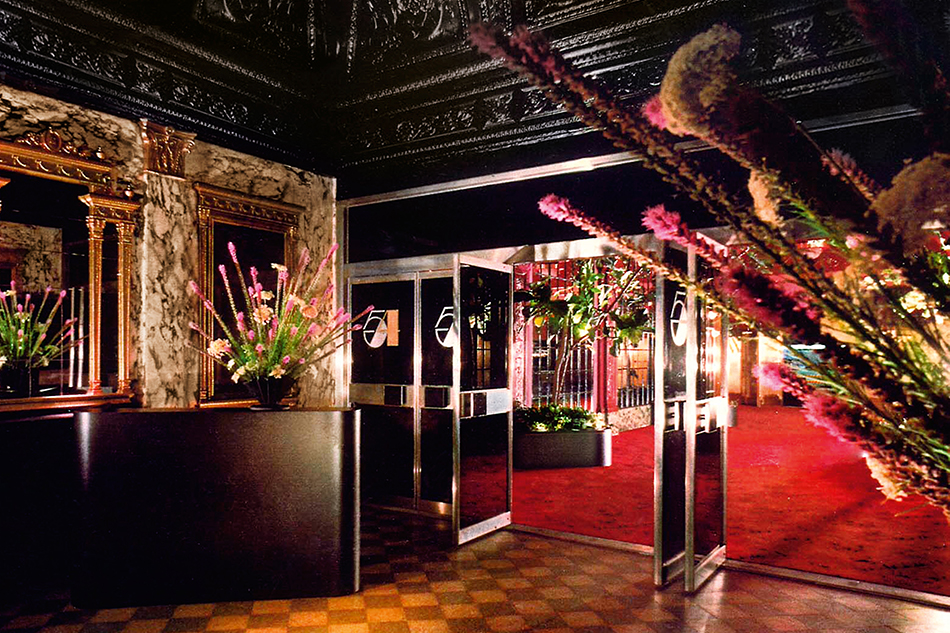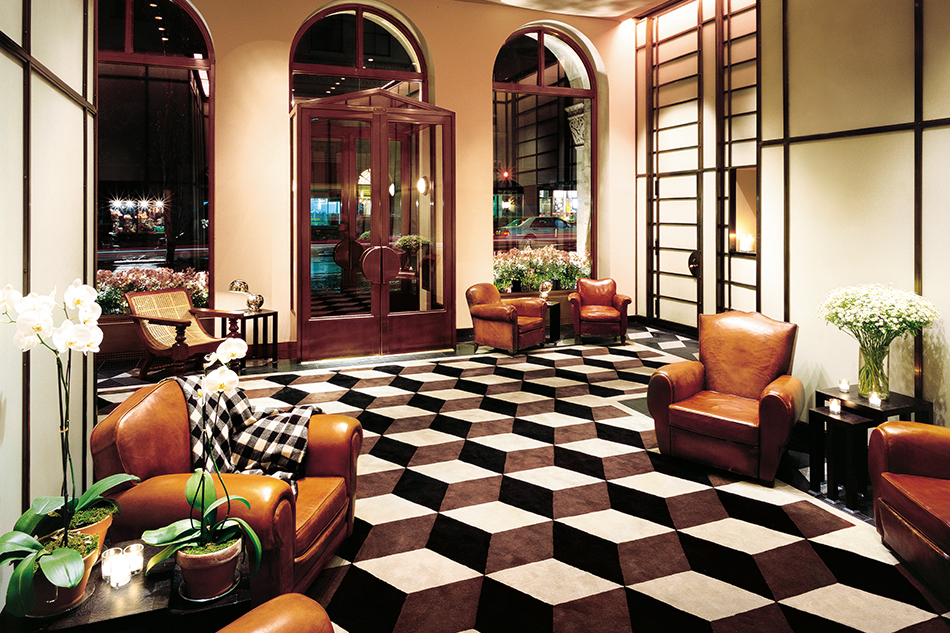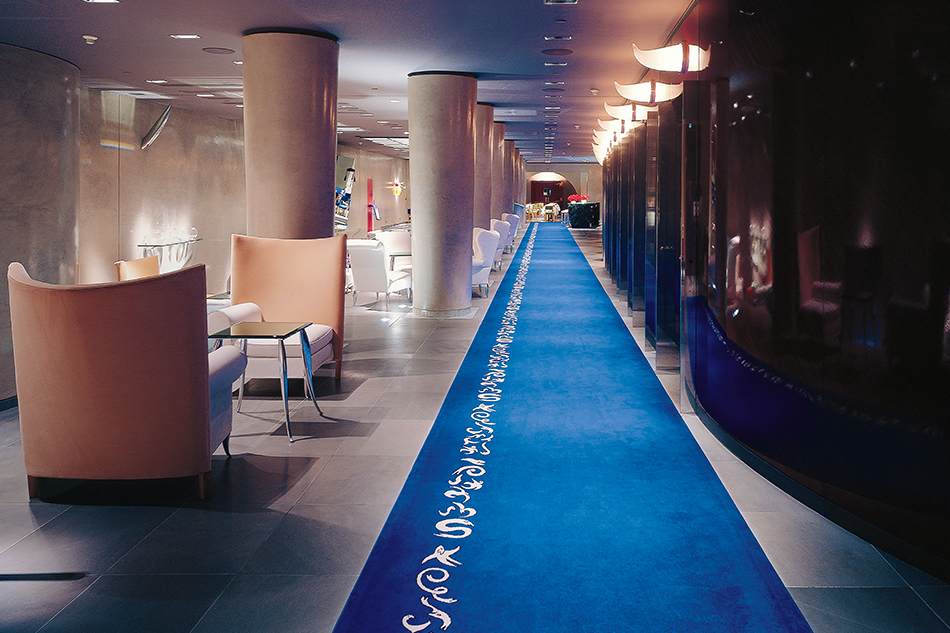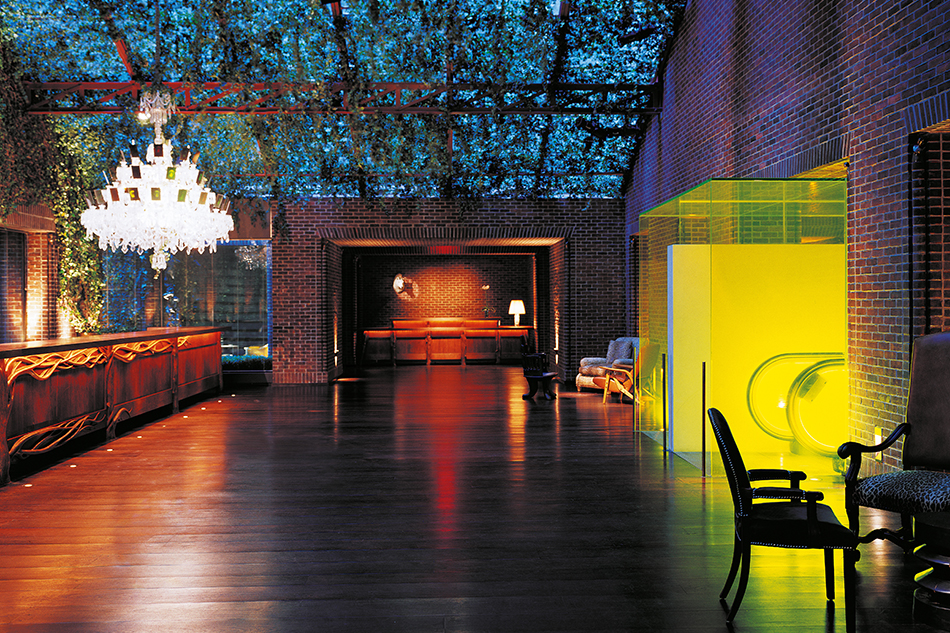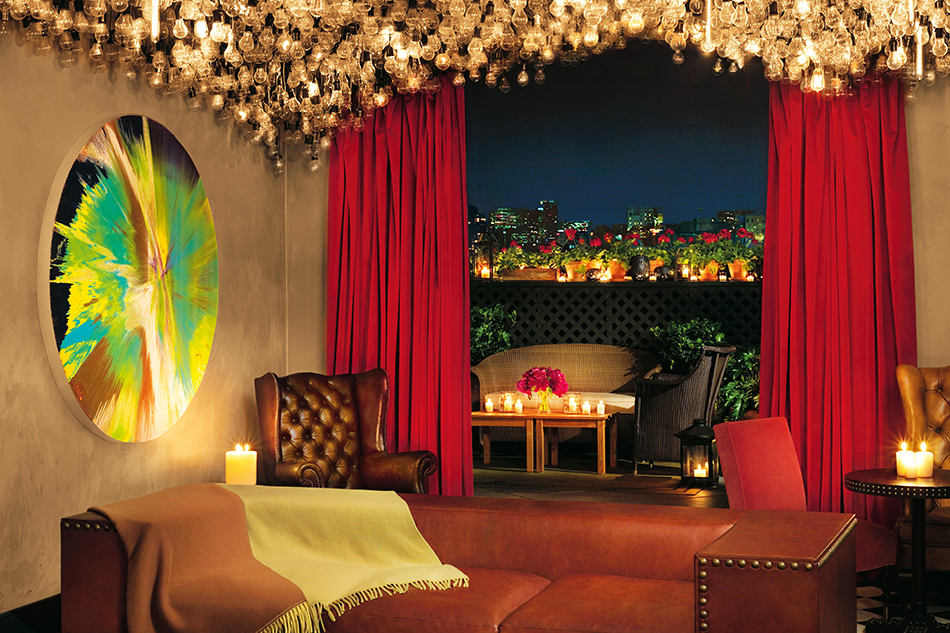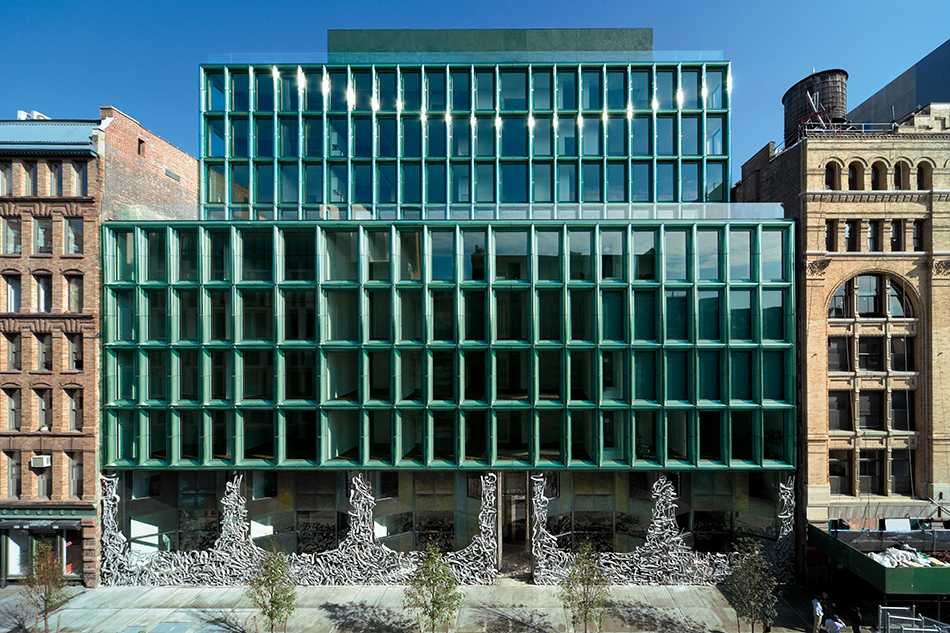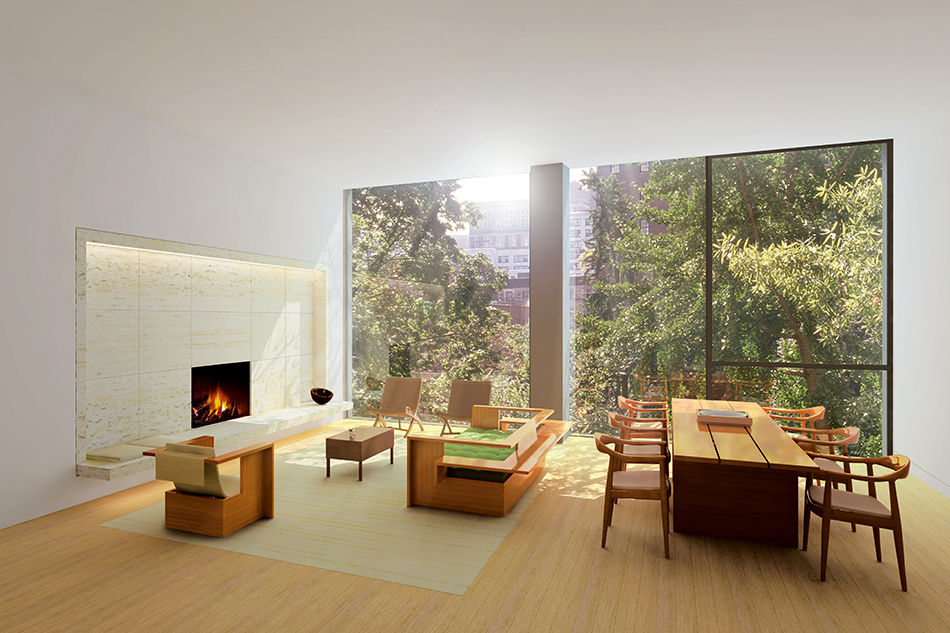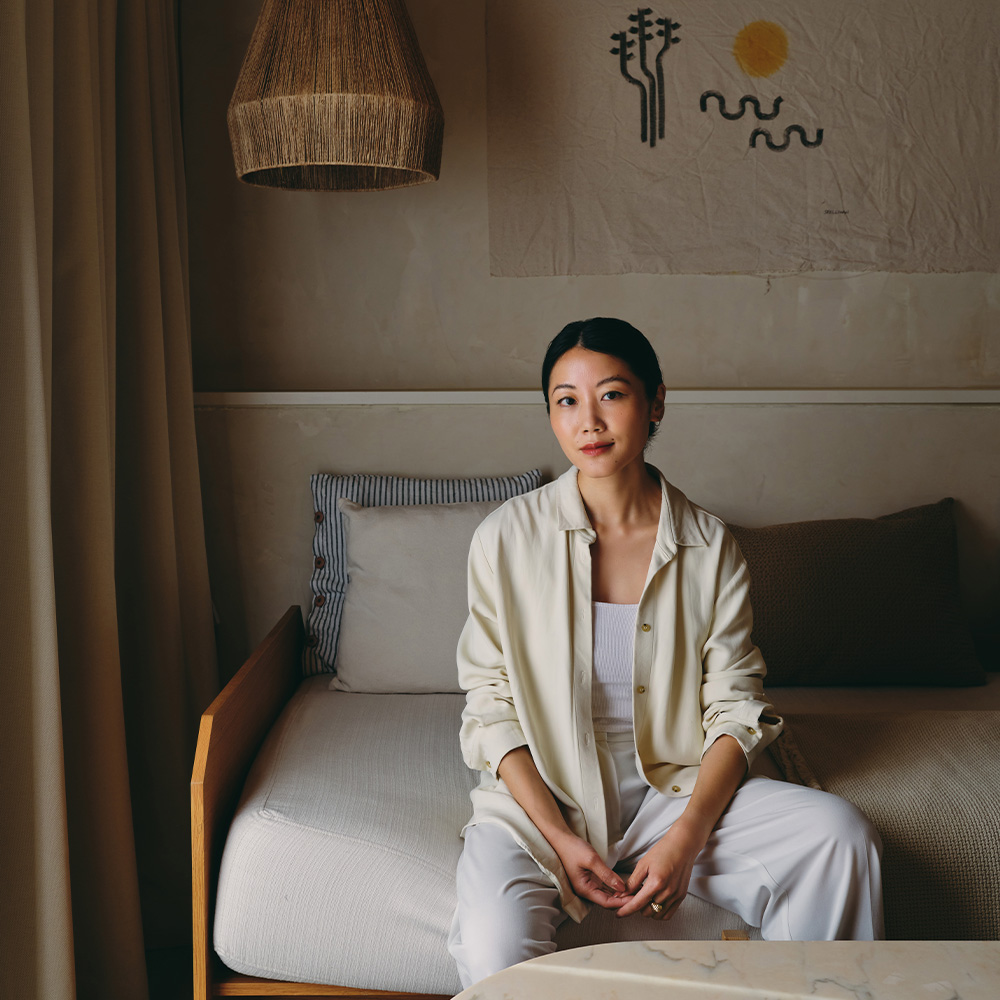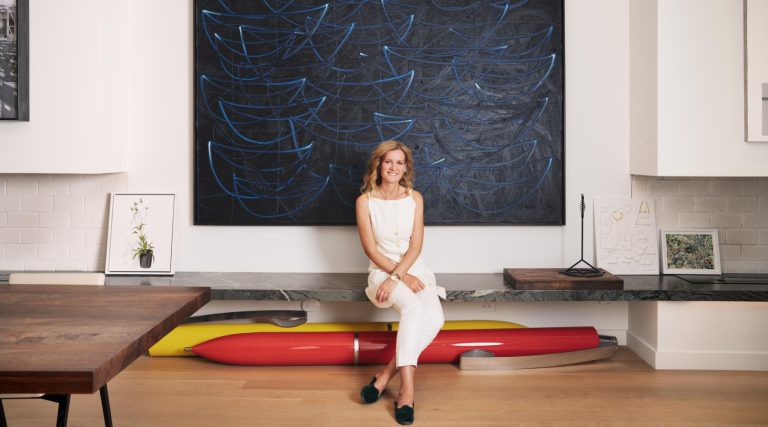
May 18, 2015In his new book, hotelier and developer Ian Schrager looks back at his four decades in the hospitality world (photo courtesy of Ian Schrager Company). Top: A rendering of a New York residential building Schrager is developing at 215 Chrystie Street, designed by the sought-after Pritzker Prize–winning Swiss architecture firm Herzog & de Meuron (rendering by Alex Morris Visualisation).
The hospitality business has never seen anyone like Ian Schrager, a truly sui generis presence.
Starting in 1977, when he and the late Steve Rubell opened Studio 54 — the New York nightclub that came to symbolize a whole era — through to his groundbreaking hotels, including Morgans and the Royalton, in New York, and the Delano, in Miami, and on to the corporate-boutique hybrid Edition hotels he creates today, Schrager has continued to upend and redefine the expectations of guests. They don’t know what they want until he gives it to them.
Serious modern design, once unheard of in hotels, has been a cornerstone of his success. Over the years, Schrager has collaborated with Robert Isabell (at Studio 54), Andrée Putman, Philippe Starck, John Pawson and Giorgio Armani, among others, to bring high style to formerly overlooked and often generic spaces like lobbies and to enliven aspects of a property that were once afterthoughts, like uniforms for hotel staff.
Imitated by many in the boutique-hotel space, Schrager, now 68, took a left turn in 2006 and went into business with Marriott to create the Edition brand, whose first outpost debuted five years ago in Istanbul, followed by a second in London. The Miami Edition opened to great acclaim last fall during Art Basel Miami Beach — and this week the latest iteration, the New York Edition, located in the landmark Metropolitan Life Building on Madison Square Park (with its iconic clock tower), welcomes guests for the first time.
Schrager took time out from finalizing the new hotel to talk to 1stdibs about his career, which is on ample display in the just-published Ian Schrager Works (Rizzoli, $75), a massive, photograph-filled tome featuring essays by Starck, Pawson and architecture critic Paul Goldberger.
I can barely lift your book. You can actually use it as a coffee table it’s so big.
Lifting it is exercise.
How did this come about?
I’ve been thinking about doing three books, and this is the first. We’re in the middle of doing a Studio 54 book, which will be a pictorial. And then the third will be an autobiography, a memoir or a biography.
Ian Schrager Works made me think of a catalogue raisonné for an artist.
Well, thank you. That’s the way I looked at it.
When you go through the book, what are the most personal, sentimental memories?
You always love your first project. But it’s funny: I don’t get attached to bricks and mortar. I wouldn’t have done anything differently.
Everyone wants to know about the fun, sexy parts of Studio 54 — dancing with Bianca Jagger and so forth. How did you think about it at the time?
It was always just a business for me.
Grand Entrances

As seen in its lobby, the London Edition (2013) incorporates contemporary design — Donald Judd–inspired sofas, a metallic egg by Ingo Maurer — into the Edwardian interiors of the Berners Hotel, which opened in 1909 in townhouses first built in 1835. In the book, Schrager describes the resulting look as “punk aristocracy.” Photo by Nikolas Koenig
You never had any fun?
I enjoyed putting it together. I worked with a lot of really creative people, and I enjoyed the success of it. I enjoyed reading my name in the paper the way anybody else would, but I guess I didn’t indulge as much. Most people go into that business because they like the people part of it. That never interested me. I was into the business of the creative part — like a film director.
But you can’t be as focused on and intense about something if you don’t really love it. Speaking of that, a little while ago somebody sent me an article on Giorgio Armani. He’s 80 years old, still working hard even though he has plenty of money because obviously he still loves it. That resonates with me. I’m still working hard because I still love it.
How has the hotel business changed for you?
What I’ve had to adjust to is: I had a certain market all to myself for 15 to 20 years, and then all of a sudden, there are many, many copies out there. Some are good. Some are not so good.
I think you are the most copied person in the hotel business.
I agree.
Which other hotels do you admire?
The ones that are done by the independent people, because they come in with original and creative ideas. They may be picking up the baton from me, but they’re still adding something. There are two brands that I think have made contributions. One is The Ace, created by the late Alex Calderwood. He came from Seattle, the coffee culture.
He brought an authentic feel.
I think he did for the day what we did for the night. He made it cool to hang out during the day with your coffee and a laptop. The second contribution is the Hôtel Costes, in Paris. The Costes brothers and the designer Jacques Garcia did it in another kind of design vernacular: Decorative, baroque. They widened the scope.
In the book, you call Morgans, which opened in 1984, “the original-original.” What does that mean?
That was the first hotel that really broke with tradition and established the boutique or lifestyle thing. It was the first one that felt like this next generation of hotels, and it was a hit from the moment the doors opened. I remember Andy Warhol sticking his head into the window and looking into the lobby. I said, “Andy, what are you doing here?” Because it was such a phenomenon.
Schrager has continued to upend and redefine the expectations of guests. They don’t know what they want until he gives it to them.
What did people respond to?
It didn’t feel like a hotel. It felt like a home. It was sophisticated. The materials, fabrics and fixtures weren’t indestructible. There were unpatterned carpets and white sheets and white towels and paint on the walls. We had Dean & DeLuca minibars and Kiehl’s shampoo and incandescent lighting.
Tell me about your long history of collaborating with designers — which was unheard of when you started.
Andrée Putman was the first one, at Morgans. We thought, as an intellectual proposition, if you wanted to have a unique and distinctive hotel, it would really be great to work with a designer with whom nobody else was working. At that time, no one would work with a European designer. Everybody said we were crazy: ‘They’re not here. You can’t talk to them. They measure things in meters not in inches. How are you going to work with someone three-thousand miles away?’
That didn’t dissuade you?
We saw that as an opportunity. It was a risky thing, but if we could navigate through it, we were going to get something nobody else had.
Creative Collaborations

Schrager and Starck teamed up again for Manhattan’s Paramount (1990), extending the boutique hotel concept to a much larger and less expensive property: Rates for its 610 rooms started at $90, leading Schrager to coin the term “cheap chic.” A guestroom features a reproduction Vermeer as a headboard and a lamp inspired by a Brancusi bird sculpture. Photo by Tom Vack
What did you like about working with her?
Her work is so distinctive. At that time, she hadn’t really done very much. She did the office for the culture minister of France. She may have styled a little bit for Yves Saint Laurent and Karl Lagerfeld — she was connected to the fashion world over in Paris. She had incredible taste, and I thought she would do a hotel that was very attractive to other very stylish and sophisticated people.
What were the other most important designer collaborations?
Philippe Starck, who’s a kind of maverick. He’s a very lyrical, creative and poetic kind of mad-scientist guy. He and I hit it off like two peas in the pod. Kindred spirits. He did the Royalton, the Delano, the Mondrian San Francisco, two hotels in London and the Hudson in New York.
What do you like about what he did?
He had a sense of wit and humor and whimsy. He understood the night world. He understood about making the lobby a beehive of activity, which is really what we wanted to do for the Royalton.
And his playful, surreal aesthetic was an immediate hit.
At that time, we wanted to get noticed. I wouldn’t do that now.
The Edition brand has a very different look.
It’s sophisticated. Simpler. It doesn’t really rely on any of those flamboyant gestures. It tries to appeal to good taste, a kind of quiet luxury for people who have been inundated with overzealous design.
A little more minimal overall?
I hate the word minimal, although it really is minimal.
Does that reflect on the evolution of your taste?
Yes. My taste has widened, but it’s more confident and more self-assured. I don’t agonize over every single thing the way I used to. I’m a lot faster and more prolific. It’s almost like being a writer: Very tight. Very cohesive. Not a wasted word.
You have a four-year-old son. Does that make you think of hospitality differently?
No. I had young kids coming to the Delano, but we wanted it to be all white. Everyone said, “Oh come on, what about the kids?” But do you have to have cartoon characters on the wall? Kids respond to the same thing as adults. My kids’ rooms are not decorated with airplanes and Mickey Mouse characters. They’re decorated nicely. I think they should be exposed to good design early.
The New York Edition is located in Madison Square’s famous Met Life building — automatically a point of difference.
That’s a unique, distinct, iconic building, which I think is good if you’re looking to build a global brand. We are making this a jewel box in New York. It’s right on the dividing line between uptown and downtown, and it’s a next-generation luxury hotel. There’s nothing like it in New York City.

At the just-opened New York Edition, in the historic Met Life clock tower building overlooking Madison Square Park, guestrooms mix textures both rough and smooth, all within a soothing muted palette. The floor lamp is by Christian Liaigre. Photo by Nikolas Koenig

At 215 Chrystie, glass walls meet at the building’s corners seamlessly, making for uninterupted, almost vertiginous views of the surrounding New York City skyline. For the interiors, Schrager once again turned to minimalist Pawson. Rendering by Alex Morris Visualisation
How is it working with the Swiss architects Herzog & de Meuron on various projects, including the residential building 40 Bond, where you live, and the forthcoming ones on Chrystie Street and Leroy Street?
I love them. They’re brilliant. They’re a world-class, memorable architecture team that people will be talking about a hundred years from now. I love what they are doing at the Park Avenue Armory: It’s like injecting fluid into a dead body. I don’t think they have a specific look, like Philippe [Starck] does. Every time they do something, you don’t know what to expect.
Are there other designers and architects you want to work with in the future?
I like Ole Scheeren [the German architect who works frequently in Asia]. I spoke with Rem Koolhaas the other day because I think he’s brilliant. I might work with him on something.
What do you want people to take away from the book?
That I really had an impact on things and changed the hotel industry. What Steve and I started, everyone was so skeptical about it, and now there are thousands and thousands of versions. So, that’s gratifying to me. It’s a life’s work.

